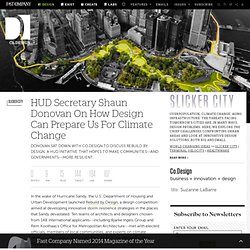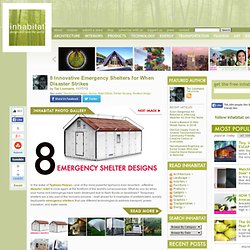

Design for disaster – aid, victims, information, communication, knowledge, experiences, ideas, projects. Students design ‘disaster’ for Wisconsin rescue training facility. When University of Wisconsin-Madison civil and environmental engineering students Dan Zignego, Jake Varnes, Bill Schmitz and Nick Bobinski began a design project meant to be the crowning glory of their educational careers, they never thought it would turn into such a disaster.

A jumbled mass of steel, concrete, wrecked vehicles and mannequin victims make up Wing 2 of the 6,400-square-foot Rubble Pile at the React Center near Camp Douglas, Wis. Part of a unique Wisconsin facility that provides disaster- and complex-rescue training to hundreds of firefighters, Wing 2 of the Rubble Pile, which was designed by a team of four UW-Madison civil and environmental engineering students, simulates the wreckage created by an apartment-building collapse onto a parking garage. Fortunately, a disaster is exactly what their client — state of Wisconsin REACT Center director Michael Kunesh — wanted.
Designed by the UW-Madison students, Wing 2 opened this month. HUD Secretary Shaun Donovan On How Design Can Prepare Us For Climate Change. In the wake of Hurricane Sandy, the U.S.

Department of Housing and Urban Development launched Rebuild by Design, a design competition aimed at developing innovative storm resilience strategies in the places that Sandy devastated. Ten teams of architects and designers chosen from 148 international applicants--including Bjarke Ingels Group and Rem Koolhaas's Office for Metropolitan Architecture--met with elected officials, members of local communities, and experts on climate change, public policy, and more.
After tours of the affected regions, they drafted design strategies to get the coastal communities of New York, New Jersey, and Connecticut ready for the rising waters brought on by climate change. HUD Secretary Shaun Donovan, who led the initiative, recently discussed housing and climate change at the New York Times' Cities For Tomorrow conference.
The final design proposals display an innovative approach to flood management, largely through landscape architecture. Life Box: An Air-Droppable Pop-Up Recovery Shelter For Victims Of Natural Disasters. Life Box is an air-droppable, rapid-response emergency shelter that can be quickly inflated to provide housing for four people.

The Red Dot Award-winning shelter contains supplies to provide relief to victims of natural disasters such as floods, tsunamis, or earthquakes. Adem Onalan conceived of the Life Box as a holistic solution that can be quickly deployed after natural disasters when relief providers are unable to reach the disaster zone due to distance, weather conditions, and the destruction of roads. The air-droppable, foldable polyethylene box houses two cardboard boxes that contain relief goods such as food, water and sleeping bags. When it is unfolded, it turns into an inflatable shelter. The outer layer of the shelter functions as a parachute during the airdrop, while the polyethylene foam interior provides insulation. The Life Box is available in three different classes: ‘air’, ‘land’ and ‘water’ . + LifeBox (Red Dot) Via PSFK. Modularflex Disaster Shelters Pop Up Where They Are Needed Most.
Anyone who has ever struggled to pitch a tent can attest to how difficult it can be to assemble a temporary shelter.

Add the stress of a natural calamity, and every second saved by quick and simple construction is a blessing aided by the genius of good design. Argentine architects Matias Alter and Matias Carrizo have created the Modularflex, a foldable disaster housing unit that packs flat and can be assembled in about half an hour. Lightweight, flexible and sturdy, the Modularflex modular units are able to be folded flat when not in use and packed six to a group on the back of a truck. With a hinge located halfway up the wall, they can be collapsed like accordions into flat panels. The walls are made from insulated thermal panels, similar to a supermarket cold storage room. By being compact and easy to set up, the homes take less energy to move and assemble.
The Modularflex was launched in 2012 at the Expo Logisti-k in Buenos Aires. 8 Innovative Emergency Shelters for When Disaster Strikes. In the wake of Typhoon Haiyan—one of the most powerful typhoons ever recorded—effective disaster relief is once again at the forefront of the world's consciousness.

What do you do when your home and belongings have been destroyed due to flash floods or landslides? Temporary shelters are a key part of the recovery process - read ahead for 8 examples of prefabricated, quickly deployable emergency shelters that use different technologies to address transport, power, insulation, and water needs. IKEA Solar-Powered Flat Pack Shelter This flat pack, easy to transport shelter was developed in collaboration between the IKEA Foundation and the United Nations High Commissioner for Refugees (UNCHR). True to IKEA’s expertise in flat packing and assembly, this 188-square foot emergency shelter is easy to assemble and can be built in just four hours. Portable buBbLe House This innovative and compact shelter is the result of a design collaboration between MMAS and architect/artist Ciprano Chas. Rescue - Survival - Emergency on Pinterest.
Architecture for Disasters. DESIGN FOR DISASTERS. DESIGN FOR DISASTERS. DESIGN FOR DISASTERS. Design for Disasters, Bangkok, Thailand.